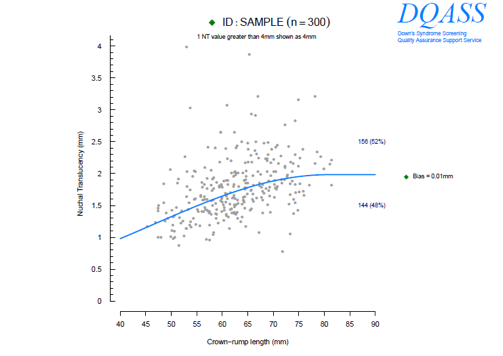AUTHOR: NADIA PERMALLOO, HEAD OF QUALITY ASSURANCE DEVELOPMENT (CLINICAL), PUBLIC HEALTH ENGLAND SCREENING
For Medical Ultrasound Awareness Month, Nadia has written a short article outlining the role and importance of the Down’s syndrome Screening Quality Assurance Support Service (DQASS).
This article will be of relevance to sonographers undertaking ultrasound examinations forming part of the first trimester combined test for Down’s syndrome, Edwards’ syndrome and Patau’s syndrome.
DQASS applies to all sonographers involved in the NHS screening programme, including those sonographers who work through an agency.
Please see also the Fetal Anomaly Screening Programme (FASP) Ultrasound Practitioners’ Handbook (2015) and the FASP Programme Handbook (2018) for full context. FASP is England only. There is advice for sonographers from equivalent organisations in Scotland and Wales. For information on Northern Ireland please see a recent article by Helen Ong.
What is DQASS?
The Down’s syndrome screening Quality Assurance Support Service (DQASS) is commissioned by Public Health England to support the NHS Fetal Anomaly Screening Programme (NHS FASP).
DQASS monitors and supports the quality and effectiveness of screening for Down’s syndrome, Edwards’ syndrome and Patau’s syndrome in England. The aim of the DQASS service is to improve the calculation of the screening result by supporting and assisting local screening programmes in monitoring their practice and advising where necessary, on improvements.
How does DQASS work?
DQASS conducts a rolling audit of screening test data on a six-monthly cycle. The statistical analyses monitor the screening process at various levels; from the overall standardised screen positive rate at the top level to specific adjustments for ethnicity, smoking and other factors applied to individual biomarkers.
One of the aims of DQASS is to support continual improvement in the quality of measurements of nuchal translucency (NT) and crown rump length (CRL). This is achieved though feedback to individual practitioners on measurements of NT and CRL.
An example of the feedback provided to ultrasound practitioners every six months is shown in the figure above. Data sets are assigned green, amber or red flag status according to the estimated bias relative to the Fetal Medicine Foundation (FMF) reference curve. The flags assigned help to identify areas in which training and support should be prioritised. For example, biases of 0.3mm or more will have substantial impact on the screening programme and are assigned a red flag indicating that support and training to reduce this bias is a priority.
What can you do to get the most out of DQASS?
DQASS needs accurate codes for each ultrasound practitioner performing NHS screening for Down’s syndrome, Edwards’ syndrome and Patau’s syndrome
In order to assign a flag status correctly to ultrasound data sets, DQASS needs to be able to match each screening test to an ultrasound practitioner. DQASS will either assign the practitioner with a DQASS code, or where the practitioner has an existing FMF code, DQASS will use this.
It is important that each practitioner accurately documents their code on every request for screening. If you have any queries, please speak to your screening support sonographer or deputy, who can contact DQASS if they are unable to answer them.
The role of Screening Support Sonographers (SSS)
The role of the SSS is to support the continual improvement of the quality of measurement of NT and CRL. Two specific areas that we would like to highlight are:
- Every six months, a month before the laboratory data submission, DQASS circulates a list of ultrasound practitioners and asks for any changes to be highlighted. We would like all SSS’s to let DQASS know of any changes as they happen, but also to check the list and inform DQASS of any additional changes as soon as possible. DQASS does not need to know about maternity or sick leave.
- Feedback plots for each ultrasound practitioner are sent to the SSS in each six month cycle. Individual practitioners should receive their feedback reports from the SSS as soon as possible. These plots should also be stored in a central location so that others can access them when the SSS is unavailable.
In conclusion, DQASS is one of the quality assurance mechanisms in place to ensure a safe, accurate and consistent service. DQASS is used in conjunction with other measures such as the detailed training and education requirements for obtaining the crown-rump length and nuchal translucency measurements, the work of the screening support sonographer, and audit of images.
